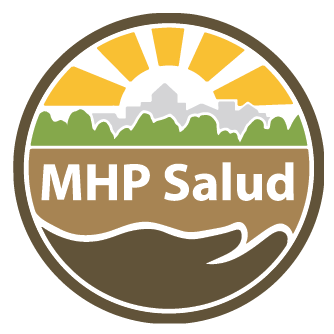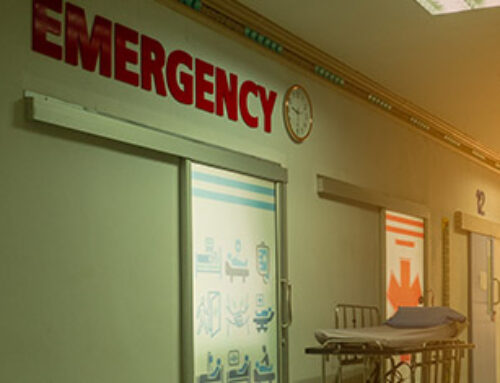Community Health Workers Bring Value to Clinical Teams
Published February 2021 | Back to all news and updates.
The idea of Community Health Workers as partners within clinical care teams has been gaining attention because of their effectiveness at reaching diverse populations in underserved communities to promote health initiatives. CHWs are by design, perfectly situated to perform health activities in hard-to-reach areas because they speak the language and come from the communities they serve. They have proven to produce results to improve health by utilizing their close relationships with community members to connect them to health and social resources. And perhaps what’s most interesting is that there is documented evidence that CHW programs are cost-effective.
CHW Programs Address Social Factors that Can Reduce Need for Expensive Treatment and Emergency Care
National health spending is projected to reach $6.2 trillion by 2028 ( growing at an average annual rate of 5.4 % from 2019-2028).1 Some health professionals argue that this spending may be considered inefficient as it is used to treat illnesses as they manifest themselves, instead of addressing the underlying social and behavioral factors that can initially contribute to the cause of the illness.2 These factors are often referred to as the social determinants of health.
CHWs tackle issues like access to care, food security, housing, and transportation with cultural awareness and the trust of the individuals they work with. It is this trusting relationship that allows them to perform activities that help to improve clinical outcomes such as chronic disease control, mental health, quality of care, frequency of hospital use, and service delivery.
For example in Salud y Vida, a program implemented by MHP Salud to work with individuals with uncontrolled diabetes, CHW-led educational sessions and case management services resulted in an 8.9% decrease in A1C levels after 3 months.
One CHW-led program for pediatric asthma patients in Boston, MA showed that over the course of a year, emergency department visits related to asthma were reduced by 68% and hospitalizations decreased by 84.8%. 3
The ROI of CHW Programs
There is proof that when CHWs programs rear successful health-outcomes, there is a positive return on investment (ROI). Many CHW programs measure their economic benefits through an ROI analysis which demonstrates the amount of money saved for every $1 invested in these programs.
At MHP Salud, our CHW-led Connect to Care Initiative, which provides application assistance for government programs like Medicaid and CHIP to Hispanics and Latinos in the Rio Grande Valley saw a return of $2.19 for every $1 spent.
One study on a CHW-led intervention created to address social determinants of health (from the University of Pennsylvania) found that every dollar invested in the intervention would return $2.47 to an average Medicaid payer within the fiscal year.2
Additionally, many studies document that CHW programs save cost due to reduced use of emergency rescue services, reduced hospitalizations, fewer hospital readmissions, and reduced nursing home placements.5
MHP Salud provides a free ROI toolkit for organizations that want to conduct ROI on their CHW-led programs. MHP Salud also offers training and consulting services to support organizations that want to measure ROI for their CHW-led programs. These services is appropriate for a wide variety of organizations and can be adapted to meet their unique needs.
CHW Programs Provide Cost-Effective Preventative Services
Managing and treating chronic diseases have significant health and economic costs and prevention can reduce these costs.6 Many CHW programs involve activities that would fall under cost-saving preventative care measures. For example, early detection of chronic conditions like cancer, diabetes, and hypertension can be life-saving. There have been plenty of CHW-led programs that have had success conducting outreach and connecting individuals to screenings for these conditions.
CHWs from Vivir una Vida Plena, which is apart of MHP Salud’s Healthy Living Initiative, connect individuals to our clinical partners to get screened for chronic diabetic kidney disease. Those who were found to be at risk received case management services from CHWs and were enrolled in CHW-led education sessions in which they acquired skills to help them make drastic improvements to their eating habits and nearly double the amount of physical activity they incorporated into their daily lives.
The importance of connecting individuals to screenings can be seen within other areas such as individuals at risk for colorectal cancer. Only 25% of adults age 50 to 64, and fewer than 40% of adults age 65 and older in the United States are up to date.4 CHWs could play an integral role in addressing this issue through outreach and collaborations with clinical partners.
MHP Salud ran a successful cancer prevention program in which CHWs contacted nearly 3000 individuals about comprehensive preventive, diagnostic, and treatment services. They connected 3,560 individuals to cancer screenings of which 66 had a positive test result.
CHWs are Trusted by Other Health Professionals and Can Be Successfully Integrated into a Clinical Team
CHWs bring unique perspectives to clinical teams that are often missing. The dual role they play as skilled professionals and as peers to the community they serve is what sets them apart. This distinction is perhaps why in a nationwide survey, nearly half of CHWs reported working with nurses (49.7%) and physicians (46.2%).7
CHWs complement the work of other clinical team members, they do not replace the work of administrative staff, medical assistants, or nurses. In fact, the inclusion of CHWs on a care team allows the other team members to practice at their full scope.8 Further, many health professionals have advocated for the work of CHWs.
In 2017, the Tri-Council for Nursing, which includes the American Association of Colleges of Nursing, American Nurses Association, American Organization of Nurse Executives, and National League for Nursing released a statement that outlined their support for working with multidisciplinary healthcare teams that include Community Health Workers.9
The recent push within the health industry to consider integrating Community Health Workers into clinical teams can also be attributed to a CHWs ability to improve communication and strengthen personal connections with patients; their ability to improve effectiveness and efficiency of patient visits; the success they have keeping patients on action plans; and the wealth of knowledge and information they have on social issues that influence a patient’s health.
MHP Salud has developed a wealth of resources and tools to support the integration of CHWs in clinical settings. The information and advice in these tools are drawn from over 35 years of experience implementing and enhancing Community Health Worker Programs across the nation. Get free access with a quick and easy sign-up to our resource portfolio!
- NHE Fact Sheet | CMS
- Evidence-Based Community Health Worker Program Addresses Unmet Social Needs And Generates Positive Return On Investment | Health Affairs
- Massachusetts Department of Public Health, 2015
- https://www.healthypeople.gov/2020/leading-health-indicators/2020-lhi-topics/Clinical-Preventive-Services
- In Focus: Integrating Community Health Workers into Care Teams | Commonwealth Fund
- Health and Economic Costs of Chronic Diseases | CDC
- Strategies to Improve the Integration of Community Health Workers Into Health Care Teams: “A Little Fish in a Big Pond” (cdc.gov)
- States Implementing Community Health Worker Strategies (cdc.gov)
- tri-council-community-based.pdf (aonl.org)
Blog Topics
About MHP Salud

MHP Salud has over 35 years of experience implementing CHW programs and training organizations looking to start and/or strengthen their own CHW programs. Visit our CHW Training & Consulting Services page to learn more about how we can help.






